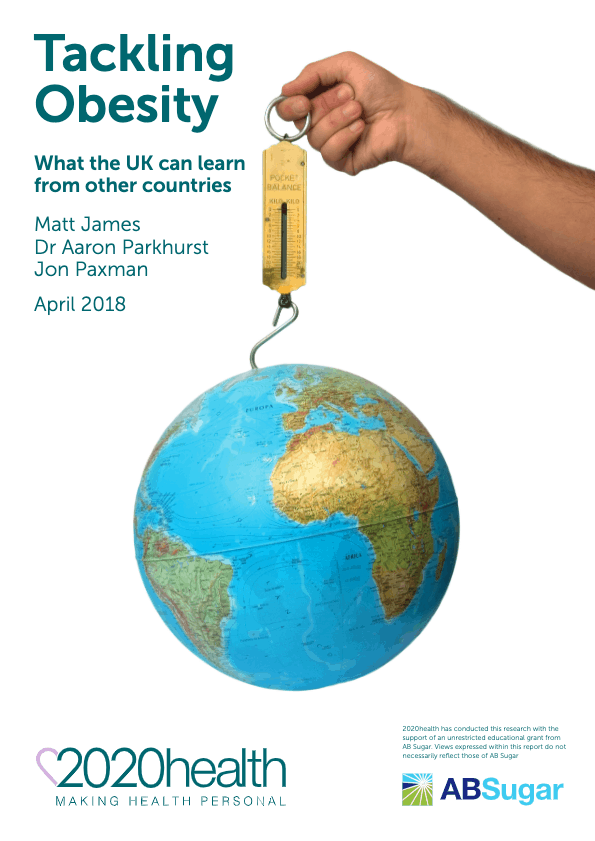Tackling obesity – What the UK can learn from other countries
Latest report argues UK still lacks strategic response to obesity.
2020health’s third report on obesity since 2014 highlights that strong and mandated central policy, supporting bold, holistic local action, is still needed to impact what is arguably the greatest health challenge of the 21st century.
Tackling obesity – What the UK can learn from other countries (Matt James, Dr Aaron Parkhurst and Jon Paxman) examines topical obesity intervention strategies from around the world to frame the question: can the UK learn from policy abroad?
Director of 2020health Julia Manning said, “No country has unequivocally burst the obesity bubble, but there are countries, regions, cities and towns that have explored interventions and approaches that the UK has not. We cannot claim to be serious about reducing the increasing prevalence of obesity if the UK’s approach continues to be piecemeal”.
“In 2020health’s opinion, we betray the next generation with our reticence to take obesity seriously and comprehensively.”
Research by 2020health shows that at a local level, community-based programmes for school-aged children, typically 0–12s, are much more effective than interventions focused on school environments alone. The greatest impacts have been seen where programmes have traversed childhood and educational settings, the family home, community structures and the built environment.
Report author Jon Paxman said, “The UK government has rightly placed principal focus on children, but a health-in-all-policies approach has yet to be realised. Currently, school nutrition and exercise policies are diluted by an opt-in position among academies and free schools, and are not always observed by schools under the Local Authority.
“If the UK fails to implement joined-up, multi-sectoral obesity prevention strategies for children and their families across a range of local contexts, it has little hope in ever reversing the obesity epidemic among the wider population.”
Ends
The full report is available on our website.


